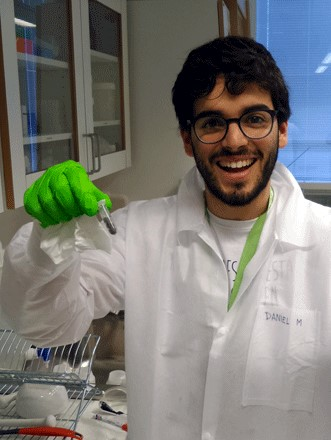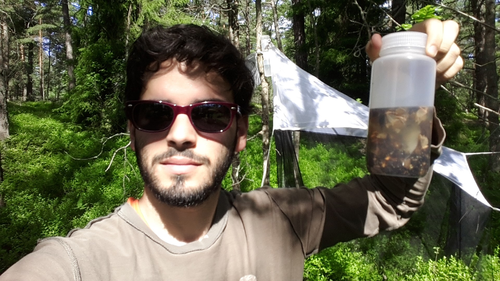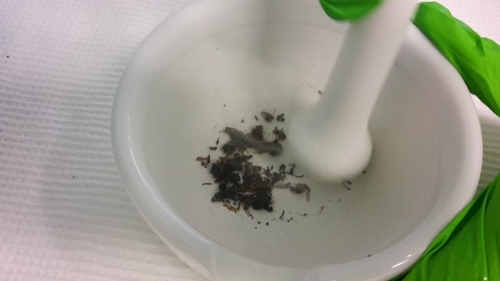This post was written by Daniel Marquina.
 How unique is this habitat? Is this a biodiversity hotspot? Should we invest public resources in preserving it? Is this a healthy environment? Have our conservation efforts done any good? How does the food web look like in this habitat? How many species are there?
How unique is this habitat? Is this a biodiversity hotspot? Should we invest public resources in preserving it? Is this a healthy environment? Have our conservation efforts done any good? How does the food web look like in this habitat? How many species are there?
Answering this type of questions is a key point for an ecologist, a nature reserve manager or even for the government, to be able to do their job. Whether it is for the purpose of research on the biodiversity of a certain area, the monitoring of the habitat or the decision to protect the place or not, it is fundamental to have a clear view of how the ecosystem is structured. And the most basic part of this structure is the number of species that coexist in it. The way to find the answer might vary depending on the group of organisms: walking around a delimited area counting different species (for plants), observing with a pair of binoculars during a transit (birds, amphibians), setting up a remote sensing camera during the night (mammals) or electrofishing in a river (fish). For insects, this kind of direct observation is much more difficult because they are much smaller and most of the time, species identification requires detailed analysis of the morphology of, for instance, the dissected reproductive organs. Thus, it is common to use different types of traps when sampling insects to collect as much as one can, with the Malaise trap being the most popular one (developed by the Swedish entomologist René Malaise).
Malaise traps are usually left in the field for one or two weeks, and then the insects are collected and brought to the laboratory for identification.

Until recently, the only way to identify them was for an expert taxonomist to examine specimens one by one. This process, apart from relying on the availability of taxonomists for all the different insect groups, is extremely slow, sometimes taking tens of years to identify all the specimens from a collection campaign. However, taking advance of the Next Generation Sequencing platforms, we are now able to amplify and sequence a short fragment of any gen from thousands of individuals at a time. Certain genes have the property of being very similar in their nucleotide sequence between individuals of the same species, but significantly different between individuals of different species. They are what we call ‘barcoding genes’, and they allow us to assign any insect to the correct species by comparing their sequence with a previously created reference database. This technique is called ‘metabarcoding’.
BIG4 has given me the opportunity to expand my research horizons, landing into the field of entomology, where there is much to learn that is already known, but so much more unknown. The way people are connecting thanks to the consortium, makes us eager to keep collaborating between teams, even after the project comes to an end.
In this project, we focused on the technical aspect of metabarcoding of insects, although our protocols can be applied for any other animal group. One of the most important components of this work pipeline is to use good primers (small fragments of DNA that can be artificially synthetized, that make the gen amplification reaction possible for the posterior sequencing), since they have to be able to bind equally well to the DNA of all the species present in the sample. This is particularly difficult because of the huge variability in the target sequence, and a bad primer design can cause inability to identify species that are actually present in our sample. Using a set of computational tools, we have designed and evaluated new and already existing primers, using the most comprehensive reference database to date with more than 2000 sequences belonging to approximately 1100 species. With this material, we have identified better regions of these barcoding genes, easier to amplify and with the same identifying capacity than the most used and more difficult to amplify gen. We have concluded that the combined use of these regions two-by-two enhances the detection capacity of metabarcoding applied to insects over the use of a single gen. These primers are currently being used in different case-study surveys, and we will soon have data on their in vitro performance.

On the other hand, we are nowadays testing and developing different DNA extraction methods from whole samples that allow us to preserve the morphology of the insects intact for further examination. The usual protocol consists of grinding the insects to make a soup or a paste, which is chemically treated to extract the entire DNA. In case of unknowingly dealing with a new species in our sample, such protocol would destroy the possibility of formally describing it, a huge mistake in these times of biodiversity loss. With the optimization of the non-destructive DNA extraction we are conducting, we will be able to pinpoint a new species from the perspective of DNA sequencing, and later examine and describe it, since the morphology of the insect will be preserved.
Publications within the project:
- Marquina, D., Andersson, A. F., & Ronquist, F. (2018). New mitochondrial primers for metabarcoding of insects, designed and evaluated using in silico methods. bioRxiv, 325688.

